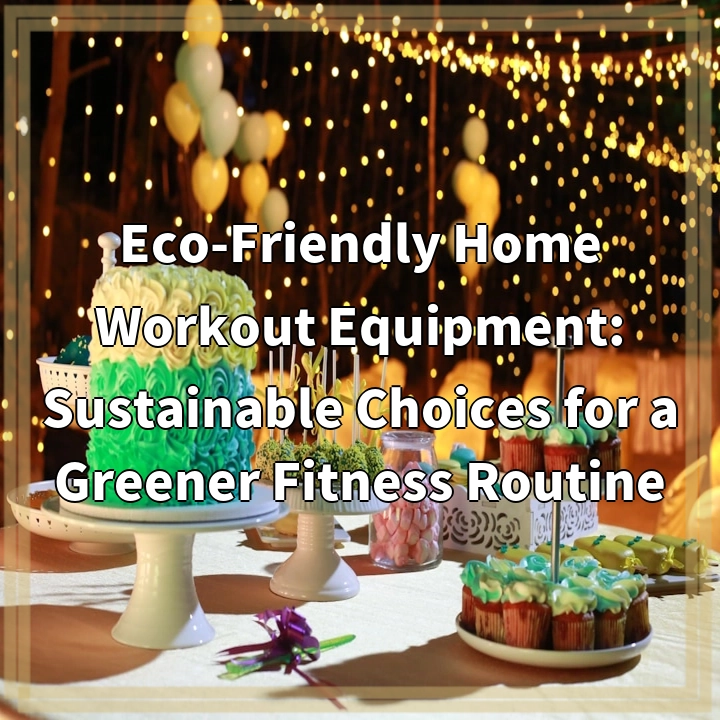
What it is:
Eco-friendly home workout equipment refers to fitness gear that is designed with sustainability in mind. This includes products made from recycled materials, natural, biodegradable components, and those that minimize environmental impact during production and disposal. Popular examples of eco-friendly workout equipment include yoga mats made from natural rubber, resistance bands crafted from recycled fabrics, foam rollers generated from recycled materials, and weights made from sustainably sourced substances.
Benefits of Eco-Friendly Home Workout Equipment
Choosing eco-friendly workout equipment offers several advantages, not only for the environment but also for personal wellbeing. These products typically avoid harmful chemicals, making them safer for users and the environment. Additionally, supporting companies with sustainable practices encourages a more extensive movement towards eco-conscious consumerism.
Real-World Problems
Despite the benefits of eco-friendly workout equipment, there are several real-world problems associated with it:
1. Accessibility and Cost
Many eco-friendly fitness products can be more expensive than traditional equipment. The cost of materials and sustainable production practices can lead to higher retail prices, making it challenging for consumers on a budget to invest in greener options. This disparity may deter fitness enthusiasts from making sustainable choices.
2. Availability
Not all regions have easy access to eco-friendly workout equipment. While urban areas may offer a variety of green products, rural regions might struggle to find them. Limited distribution channels can hinder the ability of consumers to choose sustainable options, perpetuating reliance on conventional, less eco-friendly equipment.
3. Marketing Misinformation
With the growing popularity of eco-conscious living, some companies may engage in “greenwashing,” or exaggerating the environmental benefits of their products. This can lead to confusion and distrust among consumers who want to make informed choices. It is essential for buyers to research and verify claims made by brands before purchasing to avoid falling victim to misleading marketing practices.
4. Waste and Recycling Challenges
Even eco-friendly products eventually reach the end of their life cycle. The effectiveness of recycling programs for specific materials can vary widely, and not all components of workout equipment can be recycled. This can lead to waste, negating some of the benefits of choosing green products. Consumers must stay informed about proper disposal methods to minimize their environmental impact.

Solutions for Promoting Eco-Friendly Home Workout Equipment
To overcome the challenges associated with eco-friendly home workout equipment, various solutions can be implemented that benefit consumers and the environment alike.
1. Increasing Accessibility and Affordability
To make sustainable fitness options more accessible, initiatives can be undertaken to support local eco-friendly manufacturers and retailers. Governments and organizations can also provide subsidies or incentives for businesses that prioritize sustainable production practices. Additionally, promoting bulk purchasing options or second-hand markets for eco-friendly equipment can lower costs for consumers.
2. Expanding Distribution Channels
With the rise of e-commerce, online platforms can serve as a crucial resource for consumers in rural or underserved areas. Collaborating with online retailers to showcase eco-friendly workout equipment can help broaden availability. Furthermore, local fitness center partnerships can promote and distribute sustainable products, enhancing community access.
3. Educating Consumers
Education plays a vital role in empowering consumers to make informed purchasing decisions. Brands should clearly communicate the environmental benefits of their products while maintaining transparency about materials and production processes. Offering educational resources, such as blogs, workshops, or webinars, can help consumers understand the importance of choosing sustainable options and how to identify greenwashing practices.
4. Promoting Responsible Disposal and Recycling
Encouraging responsible disposal practices is essential in reducing waste. Brands can actively participate by creating take-back programs and providing information on recycling options for their products. Collaborating with local recycling facilities and community organizations can also help facilitate the proper disposal of eco-friendly workout equipment, ensuring that materials are reused wherever possible.















